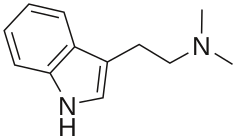This article needs additional citations for verification. (January 2015) |

| Part of a series on |
| Psychedelia |
|---|
 |
Empathogens or entactogens are a class of psychoactive drugs that induce the production of experiences of emotional communion, oneness, relatedness, emotional openness—that is, empathy or sympathy—as particularly observed and reported for experiences with 3,4-methylenedioxymethamphetamine (MDMA).[1] This class of drug is distinguished from the classes of hallucinogen or psychedelic, and amphetamine or stimulants. Major members of this class include MDMA, MDA, MDEA, MDOH, MBDB, 5-APB, 5-MAPB, 6-APB, 6-MAPB, methylone, mephedrone, GHB, αMT, and αET, MDAI among others. Most entactogens are phenethylamines and amphetamines, although several, such as αMT and αET, are tryptamines. When referring to MDMA and its counterparts, the term MDxx is often used (with the exception of MDPV). Entactogens are sometimes incorrectly referred to as hallucinogens or stimulants, although many entactogens such as ecstasy exhibit psychedelic or stimulant properties as well.[2]
- ^ M., Colman, Andrew (2015). A dictionary of psychology. Oxford University Press. ISBN 9780199657681. OCLC 896901441.
{{cite book}}: CS1 maint: multiple names: authors list (link) - ^ McGregor, Iain S.; Thompson, Murray R.; Callaghan, Paul D. (2010-01-01). Stolerman, Ian P. (ed.). Encyclopedia of Psychopharmacology. Springer Berlin Heidelberg. pp. 758–762. doi:10.1007/978-3-540-68706-1_154. ISBN 9783540686989.